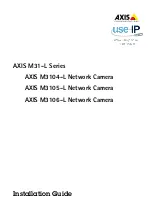
S e n d f e e d b a c k t o n x 5 0 0 0 - d o c f e e d b a c k @ c i s c o . c o m
37-4
Cisco Nexus 5000 Series Switch CLI Software Configuration Guide
OL-16597-01
Chapter 37 Configuring and Managing VSANs
Information About VSANs
•
Traffic isolation—Traffic is contained within VSAN boundaries and devices reside only in one
VSAN ensuring absolute separation between user groups, if desired.
•
Scalability—VSANs are overlaid on top of a single physical fabric. The ability to create several
logical VSAN layers increases the scalability of the SAN.
•
Per VSAN fabric services—Replication of fabric services on a per VSAN basis provides increased
scalability and availability.
•
Redundancy—Several VSANs created on the same physical SAN ensure redundancy. If one VSAN
fails, redundant protection (to another VSAN in the same physical SAN) is configured using a
backup path between the host and the device.
•
Ease of configuration—Users can be added, moved, or changed between VSANs without changing
the physical structure of a SAN. Moving a device from one VSAN to another only requires
configuration at the port level, not at a physical level.
Up to 256 VSANs can be configured in a switch. Of these, one is a default VSAN (VSAN 1), and another
is an isolated VSAN (VSAN 4094). User-specified VSAN IDs range from 2 to 4093.
VSANs Versus Zones
Zones are always contained within a VSAN. You can define multiple zones in a VSAN.
Because two VSANs are equivalent to two unconnected SANs, zone A on VSAN 1 is different and
separate from zone A in VSAN 2.
Table 37-1
lists the differences between VSANs and zones.
Figure 37-3
shows the possible relationships between VSANs and zones. In VSAN 2, three zones are
defined: zone A, zone B, and zone C. Zone C overlaps both zone A and zone B as permitted by Fibre
Channel standards. In VSAN 7, two zones are defined: zone A and zone D. No zone crosses the VSAN
boundary. Zone A defined in VSAN 2 is different and separate from zone A defined in VSAN 7.
Table 37-1
VSAN and Zone Comparison
VSAN Characteristic
Zone Characteristic
VSANs equal SANs with routing, naming, and zoning protocols. Routing, naming, and zoning protocols are not available
on a per-zone basis.
VSANs limit unicast, multicast, and broadcast traffic.
Zones limit unicast traffic.
Membership is typically defined using the VSAN ID to F ports.
Membership is typically defined by the pWWN.
An HBA or a storage device can belong only to a single VSAN
(the VSAN associated with the F port).
An HBA or storage device can belong to multiple zones.
VSANs enforce membership at each E port, source port, and
destination port.
Zones enforce membership only at the source and
destination ports.
VSANs are defined for larger environments (storage service
providers).
Zones are defined for a set of initiators and targets not
visible outside the zone.
VSANs encompass the entire fabric.
Zones are configured at the fabric edge.
Summary of Contents for N5010P-N2K-BE
Page 50: ...Se n d f e e d b a ck t o n x 5 0 0 0 d o c f e e d b a ck c i s c o c o m ...
Page 102: ...Se n d f e e d b a ck t o n x 5 0 0 0 d o c f e e d b a ck c i s c o c o m ...
Page 240: ...Se n d f e e d b a ck t o n x 5 0 0 0 d o c f e e d b a ck c i s c o c o m ...
Page 312: ...Se n d f e e d b a ck t o n x 5 0 0 0 d o c f e e d b a ck c i s c o c o m ...
Page 400: ...Se n d f e e d b a ck t o n x 5 0 0 0 d o c f e e d b a ck c i s c o c o m ...
Page 418: ...Se n d f e e d b a ck t o n x 5 0 0 0 d o c f e e d b a ck c i s c o c o m ...
Page 436: ...Se n d f e e d b a ck t o n x 5 0 0 0 d o c f e e d b a ck c i s c o c o m ...
Page 658: ...Se n d f e e d b a ck t o n x 5 0 0 0 d o c f e e d b a ck c i s c o c o m ...
















































